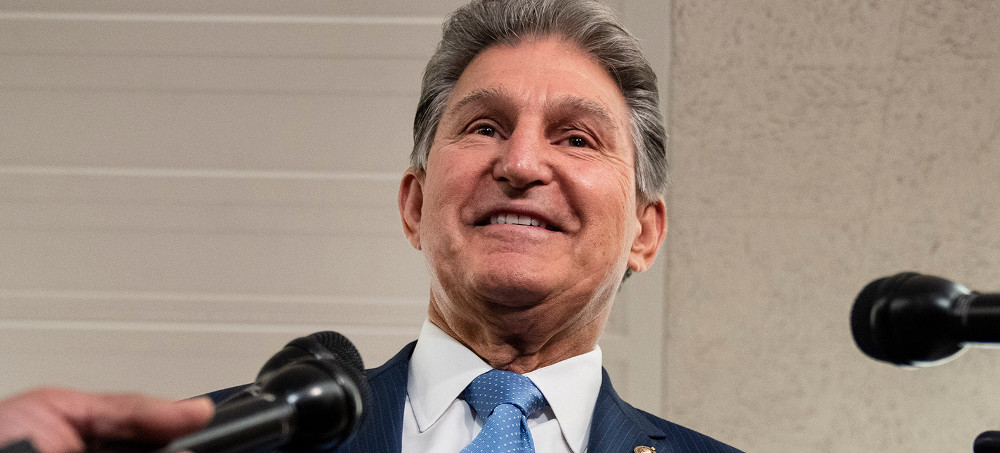Live on the homepage now!
Reader Supported News
The article below is satire. Andy Borowitz is an American comedian and New York Times-bestselling author who satirizes the news for his column, "The Borowitz Report."
Speaking to reporters at the Capitol, Manchin seemed overwhelmed by the award, saying that he was “humbled and honored.”
“When I work hard to keep benefits out of the hands of poor children, I’m not doing it to win a prize,” he said. “I’m just doing what I love.”
Kyrsten Sinema, the senator from Arizona, sent her congratulations to Manchin after learning that she had been the runner-up for the award.
“I knew it wouldn’t be easy beating a great competitor like Joe,” she said. “Maybe next month.”
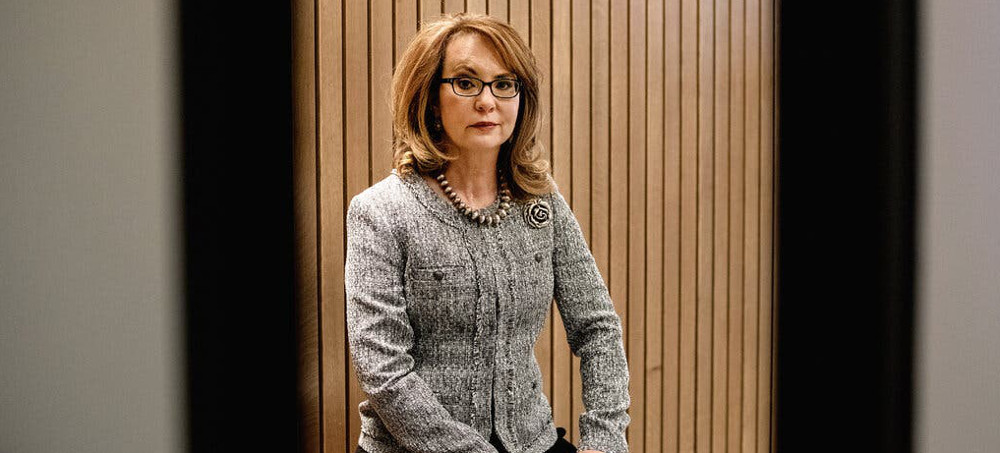 Former Congresswoman Gabby Giffords. (photo: Cherise May/The New York Times)
Former Congresswoman Gabby Giffords. (photo: Cherise May/The New York Times)
After years of inaction by the Federal Election Commission, a gun-control group founded by Gabby Giffords is suing the NRA over an alleged scheme to funnel millions to Republicans.
It could also be a landmark case for U.S. election law.
Giffords’ nonprofit—also called Giffords—had previously targeted the NRA in a number of complaints to the Federal Election Commission. Those complaints, first filed in 2018, went unanswered by the agency for so long that on Monday a federal judge granted Giffords the right to sue the NRA itself—opening a door that campaign finance reform advocates say had been locked for too long.
But it did not take Giffords long to act. One day later, the nonpartisan watchdog Campaign Legal Center Action, which has been working with the nonprofit, filed the new lawsuit in D.C. District Court.
The lawsuit centers around the allegation that the NRA skirted campaign finance laws—contribution limits and disclosure requirements—by using a network of shell companies to funnel money to Trump and other GOP candidates. The lawsuit also alleges that the NRA-affiliated shell companies illegally coordinated with Republican campaigns by using the same vendors and personnel to run ads for these candidates.
The lawsuit claims these vendors, which had different names when working for campaigns and when they were working for private companies, were “functionally indistinguishable.”
“They are led by the same people, located at the same address, and have no internal separation or firewall between the staff who work for each entity,” the lawsuit said.
Molly Danahy, Senior Legal Counsel for Litigation at Campaign Legal Center Action, said in a press release that “this illegal coordination corrupts our election process and deprives voters of their right to know who is spending to influence their vote.”
“But as usual,” Danahy said, “the FEC failed to enforce the law.”
David Pucino, senior staff attorney for Giffords Law Center, called the NRA’s alleged illegality “brazen.” The group, Pucino said, had “used shell companies to funnel millions and millions of dollars” in advertising expenses to consultants who simultaneously contracted with various Republican campaigns. Federal law bars outside groups from coordinating directly with candidates.
As a remedy, the complaint asks the court to issue an order to prevent the NRA from “violating the law in future elections,” as well as a fine in the amount of money spent in the scheme, payable to the Treasury Department. The lawsuit pegs that number as high as $35 million—with $25 million going to Trump’s 2016 campaign—and it cites a section of the federal civil code which could as much as double that number, if the court finds the violation was “knowing and willful.”
A number of federal candidates received the allegedly illicit support, going back as early as 2014. The complaint details efforts that year extending to the campaigns of Sen. Thom Tillis (R-NC), Sen. Tom Cotton (R-AR), and Sen. Cory Gardner (R-CO). Two years later, Sen. Ron Johnson (R-WI) and then-candidate Donald Trump’s presidential bid benefited. And in 2018, the NRA deployed the supposed scheme to back two more GOP campaigns—Sen. Josh Hawley (R-MO), and Montana Senate hopeful Matt Rosendale.
“They were presumably so brazen because they assumed no one would enforce the law,” Pucino said. “Our lawsuit shows that assumption is wrong.”
And that’s where the implications spiral.
The suit is among a handful of trailblazers currently going through the courts. It carves a legal path around a politically deadlocked FEC, whose Republican commissioners have long been criticized by Democrats for stonewalling the agency’s duty to enforce campaign finance violations.
Giffords, however, found a loophole. As legal expert Stuart McPhail explained, Congress saw a deadlocked FEC coming when it created the commission, so it created a unique backstop.
“You can sue the FEC if it doesn’t do its job, then a court can order it to do its job, and if it doesn’t, the complaints can go to court themselves,” said McPhail, the legal counsel at Citizens for Responsibility and Ethics in Washington, another government watchdog which is pursuing two similar workarounds in court. “It’s like consumer protection and environmental lawsuits. It’s not only up to government agencies; citizens can go to court for redress.”
This lawsuit followed that same track. Initially, the CLCA and Giffords tried to get the FEC to act. When that failed, they sued the agency directly in federal court. This September, the court gave the FEC 30 days to act on the complaints, and when that deadline passed on Monday, the plaintiffs—after three years of waiting—wasted little time exercising their rights.
Pucino, counsel for Giffords Law Center, said he was disappointed that the FEC did not act, and “these violations would seemingly be able to go on if not for Giffords and the CLC stepping up.”
“It’s good that the system provides these outlets, specifically designed with that backstop we’re using,” he said. “That’s not something the NRA counted on when it launched this scheme.”
Democratic FEC commissioners have expressed frustration with their own agency.
Sitting Democratic Commissioner Ellen Weintraub provided a statement to The Daily Beast supporting this new step.
“Congress built the third-party-lawsuit oversight mechanism into the FEC’s governing statute for just this sort of situation. This lawsuit will go before a federal court that can evaluate the facts and law and enforce the law as Congress intended,” the statement said.
Former Democratic Commissioner Ann Ravel called the challenge “another example of the need to reform the dysfunctional FEC.”
“It’s definitely notable, as CLC has more willingness to assure that the law is enforced than the agency actually tasked with enforcement,” Ravel told The Daily Beast. “It’s fortunate that there are aggressive and knowledgeable groups such as CLC to hold campaign finance violators accountable.”
The sense of relief was shared by Paul Ryan, vice president for policy and litigation at watchdog Common Cause, who told The Daily Beast that in the federal campaign finance world, “there’s no cop on the beat.”
“For too long the FEC, primarily due to GOP Commissioners blocking agency action, has allowed massive violations of campaign finance law to go unpunished. Political players in Washington know there’s no cop on the beat. They cross legal lines, get away with it, and then commit even more egregious violations,” Ryan said.
He explained that, in response to complaints, “the FEC drags its feet for years”—often allowing the five-year statute of limitations to expire, after which the agency cannot haul violators into court.
“Outrageously, commissioners then sometimes acknowledge that violations occurred, but that the FEC has run out of time to do anything about it,” Ryan continued. “The Campaign Legal Center and Giffords aren’t taking it anymore. This is vitally important work to hold lawbreakers accountable—work the FEC should be doing, but isn't. Godspeed.”
This is not the only legal effort in the courts taking advantage of this end-around. CREW took a similar route in a case filed against the right-leaning nonprofit American Action Network, alleging the dark money group failed to properly register with the FEC as a political organization. That suit, along with another complaint challenging FEC immunity from judicial review, is moving forward, with actions expected possibly this month, according to McPhair.
This, of course, is not the first time that Giffords’ namesake, Gabby Giffords, has clashed with the NRA. In 2011, a gunman nearly killed her in an assassination attempt, after which she embarked on a crusade to restrict access to firearms.
Pucino expressed gratitude for those efforts.
“I’m honored I get to work for Gabby, and that this work honors her courage and bravery. This suit is just another example, that the org that carries her name also carries from her,” he said.
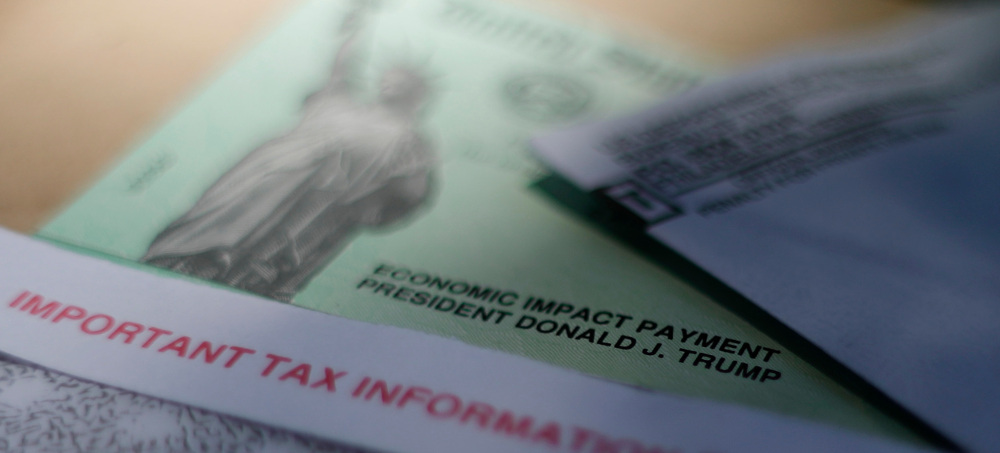 IRS records reveal that 18 billionaires and some 250 other ultrawealthy people received aid intended to help middle-class Americans. (photo: iStock)
IRS records reveal that 18 billionaires and some 250 other ultrawealthy people received aid intended to help middle-class Americans. (photo: iStock)
IRS records reveal that 18 billionaires and some 250 other ultrawealthy people received aid intended to help middle-class Americans.
Congress used a simple filter to determine who was eligible for assistance: The full $1,200 was limited to single taxpayers who’d reported $75,000 a year or less in income on their previous tax return. Married couples got $2,400 if they had reported less than $150,000 in income. Money was sent automatically to those who qualified.
Ira Rennert, worth $3.7 billion according to Forbes, did not appear to need the cash infusion offered by the CARES Act. After all, his 62,000-square-foot Hamptons home is one of the largest in the country, so he was unlikely to get cabin fever during lockdown, let alone have trouble buying food. Nevertheless, Rennert, who made his fortune as a corporate raider in the ’80s and ’90s, got a $2,400 check from the government.
George Soros, the prominent hedge fund manager and philanthropist who’s worth $8.6 billion, didn’t need the CARES cash, either. Neither did his son, Robert, himself worth hundreds of millions. But they, too, both got checks. (Both returned the checks, according to their representatives.)
ProPublica, using its trove of IRS records, identified at least 18 billionaires who received stimulus payments, which were funded by U.S. taxpayers, in the spring of 2020. Hundreds of other ultrawealthy taxpayers also got checks.
The wealthy taxpayers who received the stimulus checks got them because they came in under the government’s income threshold. In fact, they reported way less taxable income than that — even hundreds of millions less — after they used business write-offs to wipe out their gains.
ProPublica found 270 taxpayers who collectively disclosed $5.7 billion in income, according to their previous tax return, but who were able to deploy deductions at such a massive scale that they qualified for stimulus checks. All listed negative net incomes on tax returns.
Consider two stimulus recipients with similarly huge incomes in 2018. Timothy Headington is an oil mogul, real estate developer and executive producer of such films as “Argo” and “World War Z,” and he’s worth $1.4 billion. He had $62 million in income in 2018, but after $342 million in write-offs, his final result was negative $280 million. The same was true of Rennert, whose $64 million in income that year was erased by $355 million in deductions, for a final total of negative $291 million.
Figures like these reveal a basic truth about the U.S. income tax system. Most people earn the overwhelming majority of their income via wages and take deductions where they can. But the income of the ultrawealthy as revealed on their taxes tells, at best, a partial story. As ProPublica reported earlier this year, the wealthiest taxpayers often have great flexibility in when and how they take taxable income, allowing them to pay a minuscule portion of their wealth growth in taxes. For the ultrawealthy, wages are to be avoided, carrying as they do the burden of not only income tax but also of payroll taxes.
Wages rarely made up a significant portion of income for the 270 wealthy stimulus check recipients identified by ProPublica. In total, only $82 million, or 1.4%, of the $5.7 billion in income taken in by the group came in the form of wages.
The ultrawealthy have other tax advantages. Many can tap a particularly generous vein of deductions: businesses they own. These can wipe out all of their income, even for years to come, unlike other deductions, like those for charitable giving. Certain industries, like real estate or oil and gas, are a well-known source of tax benefits that can generate paper losses even for a successful business.
The amount of stimulus aid that went to ultrawealthy taxpayers was a negligible piece of the trillions spent via the CARES Act. But the fact that billionaires were able to qualify shows that when legislators rely on income tax returns to determine eligibility for aid, there can be surprising results. Asked what he thought about billionaires receiving stimulus checks, Senate Finance Committee chair Ron Wyden, D-Ore., responded, “The tax code is simply not equipped to tax billionaires fairly, or even ensure they pay anything at all.”
ProPublica reached out to every stimulus-check recipient mentioned in this article. Rennert and Headington did not respond to requests for comment. A spokesman for George Soros, who has advocated for higher taxes for the wealthy, said, “George returned his stimulus check. He certainly didn’t request one!” Robert Soros did the same, a spokesperson said. (The Soros-funded Open Society Foundations have donated to ProPublica.)
Billionaires often reap sizable tax deductions from owning sports teams, as a ProPublica story this year detailed. A number of sports team owners were among the recipients of stimulus payments. Terrence Pegula, who is worth $5.7 billion and owns both the NFL’s Buffalo Bills and the NHL’s Buffalo Sabres, was one. Also getting a check was Glen Taylor, worth $2.8 billion, who earlier this year struck a deal to sell Minnesota’s NBA and WNBA teams for $1.5 billion. Pegula and Taylor did not respond to requests for comment.
Some taxpayers had enough in deductions to wipe out even hundreds of millions in income. Robert Dart is a scion of the Dart family, which owns Dart Container Corp., the maker of the iconic red Solo cup. In 2018, he reported income exceeding $300 million, but deductions left him with a final result of negative $39 million.
Dart and his brother renounced their U.S. citizenship decades ago to take advantage of a then-existing tax break available for expatriates. Dart filed his U.S. tax return from an address in the Cayman Islands, but got a stimulus payment just the same. (The IRS declined to comment.)
In response to questions, the general counsel for Dart Container wrote, “Mr. Dart believes that people in his position should not have received COVID stimulus funds. Mr. Dart did not request any COVID stimulus funds. Instead, those funds were directly deposited into his account by the U.S. Treasury without his consent as Congress determined that taxpayers with resident alien status were eligible for such payments. Mr. Dart has returned the COVID stimulus funds he received to the U.S. Treasury pursuant to instructions provided by the IRS.”
Some of the ultrawealthy have received government benefits on more than one occasion. Take Joseph DiMenna, a partner in Zweig-DiMenna, a pioneering hedge fund. An art collector and polo aficionado, he owns a club that holds charity polo matches for anti-poverty causes. In 2017, he received a special payout from his fund of $1.1 billion. But in 2018, without such a massive payout, business deductions swung his income back to where it had been in the years before his big payday: less than $0. That entitled him to a stimulus check. In both 2015 and 2016, DiMenna’s negative income also entitled him to $2,000 in refundable child tax credits, meant to support middle-class families with child care expenses. DiMenna did not respond to a request seeking comment.
Others among the superrich also received stimulus payments the last time Congress offered them when millions of Americans were struggling. The 2009 American Recovery and Reinvestment Act offered a $400 tax credit for individuals and $800 for married couples. It was called “Making Work Pay.”
Forrest Preston, the founder of Life Care Centers of America, one of the largest long-term care companies in the U.S., is worth $1.2 billion. In 2009, he got his $400 boost. The next year, he posted an income of $112 million. By 2018, however, his income had gone negative again, entitling him to a $1,200 payment in 2020.
The same year he received his stimulus check, Preston’s company successfully lobbied to win a tax break for the nursing home industry. Preston did not respond to a request for comment.
Taylor, the Minnesota Timberwolves owner, is another two-time stimulus recipient, in 2009 and again in 2020. So was Woodley Hunt, the senior chairman of Hunt Companies, a family-owned firm that is one of the country’s largest owners of multifamily properties. Hunt did not respond to a request seeking comment.
For former Lehman Brothers CEO Richard Fuld, a big salary was a key part of the $400 million he earned in the five years before the firm’s historic collapse in 2008. But in recent years, he’s been running a company called Matrix Investment Partners that he set up to invest his own money. The tax losses generated by that company were one reason he got a stimulus check. Reached by phone and asked whether he wanted to comment, Fuld said, “I’m not interested. Thank you.”
Another CARES Act beneficiary was Erik Prince, who, before deductions, had $5.3 million in income in 2018. Prince founded Blackwater, a private military company that received hundreds of millions in government contracts. He has denounced excess government spending, saying we are being “bled dry by debt.” Prince didn’t respond to a request for comment.
A proposal in the Democrats’ (once $3.5 trillion, now under $2 trillion) Build Back Better legislation, currently the subject of fevered negotiations, would curb the ability of wealthy taxpayers to report negative income. It would do so by restricting the ability to use business losses to wipe out other types of income, like capital gains or dividends. Instead, business deductions would only offset business income.
The idea, which builds on a provision of the 2017 Trump tax bill, is one of the few tax provisions to have survived the recent negotiations — at least, for now. First proposed by House Democrats in September, it was then projected to produce $167 billion in revenue over the next 10 years. The provision was also included in a version of the legislation released on Oct. 28.
Not included in last week’s draft was a provision that would have directly affected the ability of billionaires to manipulate their incomes. A number of the billionaires who received stimulus checks were able to report negative incomes to the IRS despite getting richer. A “billionaire income tax” proposed by Wyden, would tax increases in wealth. Under the current system, gains are taxed only when they are “realized,” such as when someone sells stock.
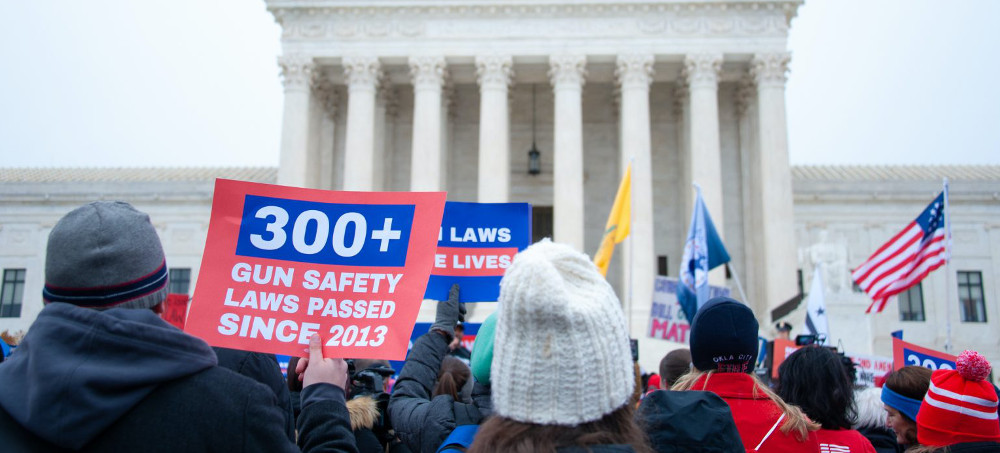 Supporters of stronger gun regulations rally at the Supreme Court in 2019. (photo: Rena Schild/Shutterstock)
Supporters of stronger gun regulations rally at the Supreme Court in 2019. (photo: Rena Schild/Shutterstock)
Depending on what the justices do, this case could have a much bigger impact on Americans’ lives — and the fate of gun regulations more broadly — than the court’s last blockbuster gun rights decision. Although that decision, released in 2008 as part of a case called District of Columbia v. Heller, profoundly shifted the law around the Second Amendment by determining that the amendment covered the personal right to own a gun, it directly affected only a handful of gun restrictions. And research conducted over the past 10 years hasn’t found a big shift in how lower courts are interpreting the Second Amendment; few gun laws have been struck down as a result.
That could change this time. At a minimum, striking down the New York law would likely result in changes to concealed-carry regulations in at least six other states, which could mean more guns on the streets of the nation’s two biggest cities. And if the court’s conservative majority decides to issue a more sweeping decision, this case could also open the door for a flood of challenges to other gun restrictions.
The last big gun rights ruling left lots of restrictions in place
The Supreme Court’s ruling in Heller was undeniably a big deal, at least symbolically. For more than 200 years, the federal courts had approached the Second Amendment as a right that belonged to a “well-regulated militia” as outlined in the Constitution — not an individual person’s right to own a gun. But colonial-era militias faded away relatively quickly, which made it pretty much impossible for anyone to successfully argue that their Second Amendment rights were being violated, according to Darrell Miller, a professor at Duke University School of Law.
That changed after 2008. In the Heller ruling, a five-justice Supreme Court majority said that focusing on the militia was a misunderstanding of the core meaning of the Second Amendment. Americans did possess an individual right to carry guns in defense of their home, much as gun rights advocacy groups like the National Rifle Association had been arguing for the past few decades. In his dissent, Supreme Court Justice John Paul Stevens called it a “law-changing decision” and a “dramatic upheaval in the law.”
Stevens was right — and wrong. Heller was a fundamental change in constitutional rights. “It was a big deal to have the Supreme Court of the United States say to gun rights advocates, ‘Yes, actually, you have a meritorious argument about a Second Amendment right to have a gun in the home,’” Miller said.
But on a practical level, Heller’s impact was quite limited. In the majority opinion, Supreme Court Justice Antonin Scalia stressed that there were still plenty of circumstances in which gun regulations were constitutional. “Nothing in our opinion,” he wrote, “should be taken to cast doubt on longstanding prohibitions on the possession of firearms by felons and the mentally ill, or laws forbidding the carrying of firearms in sensitive places such as schools and government buildings, or laws imposing conditions and qualifications on the commercial sale of arms.”
And over the next 10 years, the decision didn’t revolutionize gun laws. In a study, law professors Eric Ruben and Joseph Blocher analyzed over 1,000 lower-court decisions involving the Second Amendment between June 26, 2008 — when Heller was decided — and February 1, 2016. They found that very few of those cases were successful. In many cases, judges quoted Scalia’s caveat in their opinion, underscoring the fact that they saw plenty of room for regulation within the Heller decision.
“Many people feared or hoped that gun laws would fall like dominoes [after Heller],” Ruben said. But that hasn’t proved to be the case. In fact, Ruben added, “judges of all ideological stripes have been upholding gun laws.”
But this gun rights case could change regulations across the country
The case the justices will hear this term, though, directly addresses one of the most important questions left open by Heller: Can states put restrictions on Americans’ ability to carry guns in public for self-defense?
Specifically, they’ll be weighing a New York law that requires applicants for gun licenses to show “proper cause,” generally understood to mean a heightened need for self-defense in the public sphere. At least six other states, including California, have similar laws, which means that striking down the New York regulation would have far-reaching implications. Those states would likely need to modify their restrictions in ways that would allow a lot more people to obtain guns. And that would have an impact on a lot of people, since it’s currently extremely difficult to get a concealed-carry permit in large cities like New York and Los Angeles.
Gun rights advocates argue that looser regulations on concealed weapons would actually make those cities safer, since everyday people would be in a better position to defend themselves. But there’s a lot of evidence suggesting that’s not true. Multiple studies have suggested that a heavily armed populace doesn’t increase safety — in fact, one study found that relaxing permit requirements was associated with an increase in violent crime.
It’s not just the fate of concealed-carry restrictions that could hang in the balance in this case, though. The Supreme Court could issue a far-reaching ruling that not only strikes down New York’s law but also sets out a whole new way of evaluating whether gun regulations are constitutional — calling many kinds of gun laws into question.
There are clues to how the court could do this in a sequel case to Heller that was decided by the U.S. Court of Appeals for the District of Columbia in 2011, when now-Justice Brett Kavanaugh was a circuit court judge on the panel. Kavanaugh dissented from the majority opinion, which upheld a D.C. ban on semiautomatic weapons. He argued that when considering the constitutionality of gun regulations, judges should use an approach that weighs the “text, history, and tradition” of a given kind of law.
Some of the other conservatives could be open to that line of thinking. Justice Amy Coney Barrett, a self-proclaimed textualist, was skeptical of gun restrictions as a lower-court judge, too, going so far as to argue in a 2019 dissent that some felons shouldn’t be stripped of their rights to own guns. Justice Clarence Thomas has also been outspoken about his desire to take on more gun cases. In 2018, he dissented from the Supreme Court’s decision not to hear a case about a California gun law, calling the Second Amendment a “constitutional orphan.” And the third Trump appointee, Justice Neil Gorsuch, has less of a paper trail on gun rights, but advocates expect him to be sympathetic to textualist arguments — much as Scalia was.
It’s hard, of course, to predict how the justices will come down in this specific case, and even Kavanaugh’s approach wouldn’t necessarily spell the end of gun regulation, since as Ruben pointed out, gun regulation has existed for a long time in the United States — in fact, the New York law that’s being challenged is more than 100 years old. But it could lead to a lot of complications, since guns are much deadlier now than when the Second Amendment was written, and the mass violence that gun regulations are designed to combat is itself a modern phenomenon, which could make a historical approach pretty challenging.
But as Ruben pointed out, this approach could leave plenty of room for discretion on the part of judges trying to figure out whether gun laws are constitutional, which is important because the federal judiciary is much more conservative than it was 10 years ago. “Trying to decide whether a modern taser law is sufficiently similar to historical laws on muskets or other weapons — there’s so much subjectivity in that,” he said. More broadly, Americans’ gun rights are also still being worked out in real time. “It’s being articulated and developed for the first time in our lifetimes, and that makes it unique among constitutional rights,” Ruben said.
That means there’s a lot of room for the new conservative majority to shape gun rights in America going forward — if they can get on the same page about what that should look like.
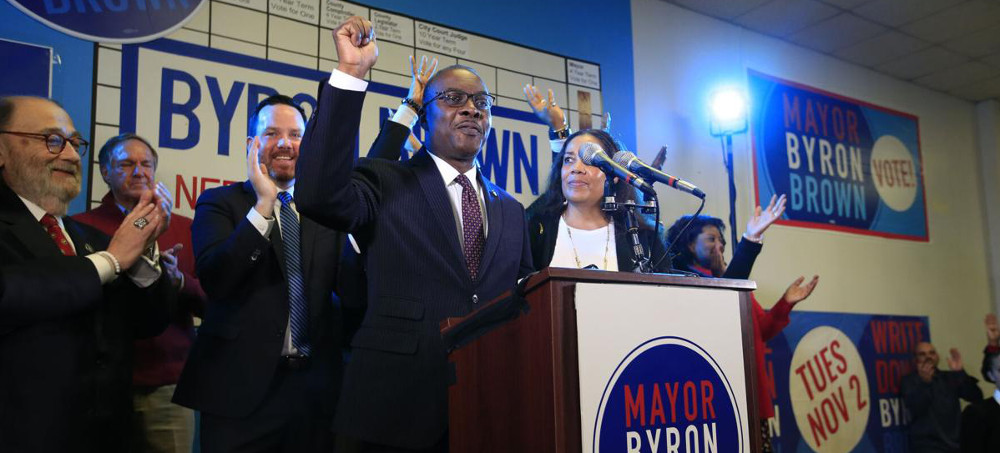 Mayor Byron Brown along with his wife, Michelle, speaks to supporters after declaring victory over India Walton for mayor of Buffalo, on Tuesday, Nov. 2, 2021. (photo: Harry Scull Jr./Buffalo News)
Mayor Byron Brown along with his wife, Michelle, speaks to supporters after declaring victory over India Walton for mayor of Buffalo, on Tuesday, Nov. 2, 2021. (photo: Harry Scull Jr./Buffalo News)
ALSO SEE: Byron Brown Might Beat India Walton
Despite a Career of Corruption and Failure
“Today’s election was not just a referendum on the direction of the city of Buffalo, it was a referendum on the future of our democracy and our vision for our future,” he said late Tuesday night.
Brown turned to a write-in campaign after losing the June primary to Walton. With a majority of the vote counted, “write-ins” held a double-digit lead in the race. While absentee votes need to be counted and write-in votes confirmed to be for Brown, the four-term incumbent celebrated the apparent victory, while Walton said all write-ins need to be counted and that she was not conceding.
Walton’s upset in the June primary was a shock in New York’s second-largest city; she defeated Brown by 4 points after he refused to debate her and essentially ignored her candidacy. A Buffalo native and registered nurse who became a mother at age 14, she had not run for office before.
Walton, 39, was involved in housing activism in the city as well as last year’s Black Lives Matter protests. Republicans did not field a candidate in the overwhelmingly Democratic city.
A member of the Democratic Socialists of America, Walton ran to become the first woman to be mayor of Buffalo and the first socialist to lead a major American city in decades.
Brown, 63, a former state senator, was first elected mayor in 2005. The first Black mayor in the city’s history, he is a moderate, pro-business executive who also served as co-chair of the state Democratic Party. He spent the general election campaign painting Walton as a dangerous radical who was too far left for the city’s residents.
As part of its effort, the Brown campaign spent tens of thousands of dollars on ink stamps so that voters would spell his name correctly on the write-in line. He received the support of the New York state Republican Party, which sent mailers to thousands of voters urging them to write in Brown’s name.
“The mailers went to a broad universe of voters who we believe will vote to stop socialism in the city of Buffalo,” said state GOP spokeswoman Jessica Proud. Nick Langworthy, the New York Republican chair, congratulated Brown on the apparent victory.
Walton’s victory in the primary splintered Democratic power brokers in the Empire State. She was endorsed by both of the state’s U.S. senators, Chuck Schumer and Kirsten Gillibrand, as well as prominent progressive Reps. Alexandria Ocasio-Cortez and Jamaal Bowman. However, following her win, the Buffalo Common Council voted to explore the idea of getting rid of the position of mayor altogether.
The state party never rallied behind her, with Gov. Kathy Hochul declining to endorse and state Democratic chairman Jay Jacobs drawing criticism last month for comparing Walton to former Ku Klux Klan Grand Wizard David Duke in an interview.
“Let’s take a scenario, very different, where David Duke — you remember him, the grand wizard of the KKK — he moves to New York, he becomes a Democrat, he runs for mayor in the city of Rochester, which is a low primary turnout, and he wins the Democratic line,” Jacobs said in an interview with Spectrum News.
“I have to endorse David Duke? I don’t think so. Now, of course, India Walton is not in the same category. But it just leads you to that question: Is it a must? It’s not a must.”
Schumer called the statement “totally unacceptable, and the analogy used was outrageous and beyond absurd,” while Bowman was among those who called on Jacobs to resign, calling his comments the “malignant narcissism of far too many white men.”
After initially refusing to apologize and defending his comments, Jacobs relented but reiterated that “not every candidate who wins a primary is entitled, unquestionably, to the endorsement of all party leaders or elected officials.”
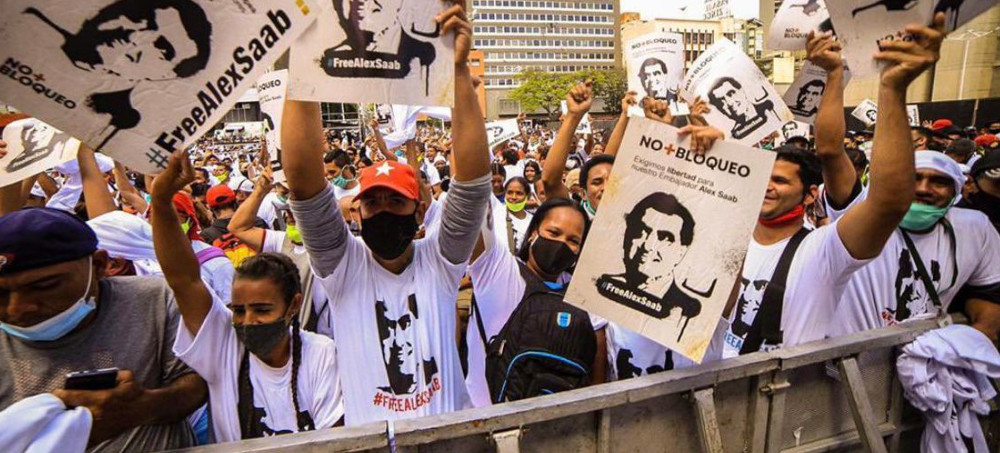 Rally in support of Venezuelan Diplomat Alex Saab. (photo: Roberto Deniz/Getty)
Rally in support of Venezuelan Diplomat Alex Saab. (photo: Roberto Deniz/Getty)
The defense of Venezuelan diplomat Alex Saab today denounced the multiple violations of international law in the process brought against him by the U.S. government.
The team of defense lawyers recalled Alex Saab's status as Venezuela's special envoy and its deputy permanent representative to the African Union. He remained in arbitrary detention until October 16, 2021, when he was illegally transferred to Miami.
They further noted that the Venezuelan diplomat's arrest was orchestrated while he was on an extraordinary humanitarian mission to Iran, crucial to the interests of the South American nation that would likely offer solutions to combat the negative impact of unilateral coercive measures.
"This cannot reasonably be regarded as a coincidence and (...) encompasses several violations of international law, including the principles of sovereign equality, political independence, non-intervention in the internal affairs of states, and peaceful settlement of international disputes," the defense stated.
The experts said that Alex Saab's detention also involved abuse of Interpol's Red Notice Mechanism, violation of the official's diplomatic immunity, and systematic violations of human rights norms during his captivity.
In the continuation of the trial, Miami federal judge Robert Scola dismissed the charges related to money laundering on seven of the eight counts against the diplomat.
Monday's court decisions come two weeks after the Venezuelan official's first court appearance, where he pleaded not guilty and said he would not collaborate to obtain a reduction in his sentence.
In 2018, Caracas accredited Saab as a special envoy to facilitate the procurement of medical supplies, food and other goods, in the face of the obstacles imposed by the U.S. blockade on the South American country.
According to denunciations by the Bolivarian Executive, his detention in Cape Verde responded to the siege campaign orchestrated by the former U.S. administration against Venezuela, to inflict more suffering on the people and destabilize its institutions and internal order.
 Monarch Butterflies clustered together for warmth on Central Coast of California. (photo: Alice Cahill/Getty)
Monarch Butterflies clustered together for warmth on Central Coast of California. (photo: Alice Cahill/Getty)
But this year, unofficial counts show the iconic insects returning to their winter haunts by the hundreds and thousands.
"We are overjoyed that migratory monarch butterflies have not disappeared from the western U.S.," Xerces Society for Invertebrate Conservation senior conservation biologist and western monarch lead Emma Pelton said in a statement. "These early counts give us hope that, if we all work together, we can still bring western monarchs back."
Western monarch butterflies typically arrive on the California coast from Washington, Oregon, Idaho, Arizona and Nevada beginning in September, according to the Western Monarch Milkweed Mapper. They gather in forest groves along the 620 miles of coastline between California's Mendocino County and Baja California, Mexico.
But their overwintering numbers have taken a massive hit in recent decades. In 2020, fewer than 2,000 butterflies were counted in coastal California, a record low following two years when fewer than 30,000 were counted, the Xerxes Society said. 2020's low was down 99.9 percent from the millions counted in the 1980s.
This year, however, things are looking up. More than 1,300 butterflies were counted at the Pacific Grove site in mid October, whereas no butterflies were seen there last year. On 20 October, around 8,000 were counted at the Pismo State Beach Monarch Butterfly Grove and another nearby site, whereas less than 300 were sited there in 2020.
Butterfly advocates won't know the official number of 2021 overwintering butterflies until the Western Monarch Thanksgiving Count, which begins November 13. However, the Xerces Society thinks numbers are looking up this year because of more favorable breeding conditions.
In general, though, the butterflies are still at risk from extinction but lack Endangered Species Act protections. The leading threats to the species are habitat loss and pesticide use, the Xerces Society said in January.
That said, a study published in Insects last month offered another bit of hope. It's possible that the monarch count was so low on California's coast last year because some of the butterflies were perfectly happy and safe inland. For the first time, large populations of butterflies were found breeding in urban parts of the Bay Area during a winter heat wave.
This might mean the butterflies are changing their habits due to the climate crisis.
"[T]here is no reason why this scenario … should not become the 'new normal' for Western North American monarchs," study co-author and Washington State University entomologist David James told The Mercury News. "Monarchs are very adaptable creatures, changing their physiology, behavior and ecology to suit conditions."
That said, human actions can help monarchs to adapt. The monarchs were able to winter in the urban Bay Area partly because of ornamental, non-native milkweed planted in private gardens and at Google's Mountain View campus. Non-native milkweed is controversial, but has the advantage of flowering year round.
"What we are learning is that the urban gardens and residential areas could be very critical," Western Monarch Advocates chair Robert Coffan told The Mercury News. "When we think of endangered species, they're usually out in the wild. But there's habitat in everyone's backyards."
Follow us on facebook and twitter!
PO Box 2043 / Citrus Heights, CA 95611

